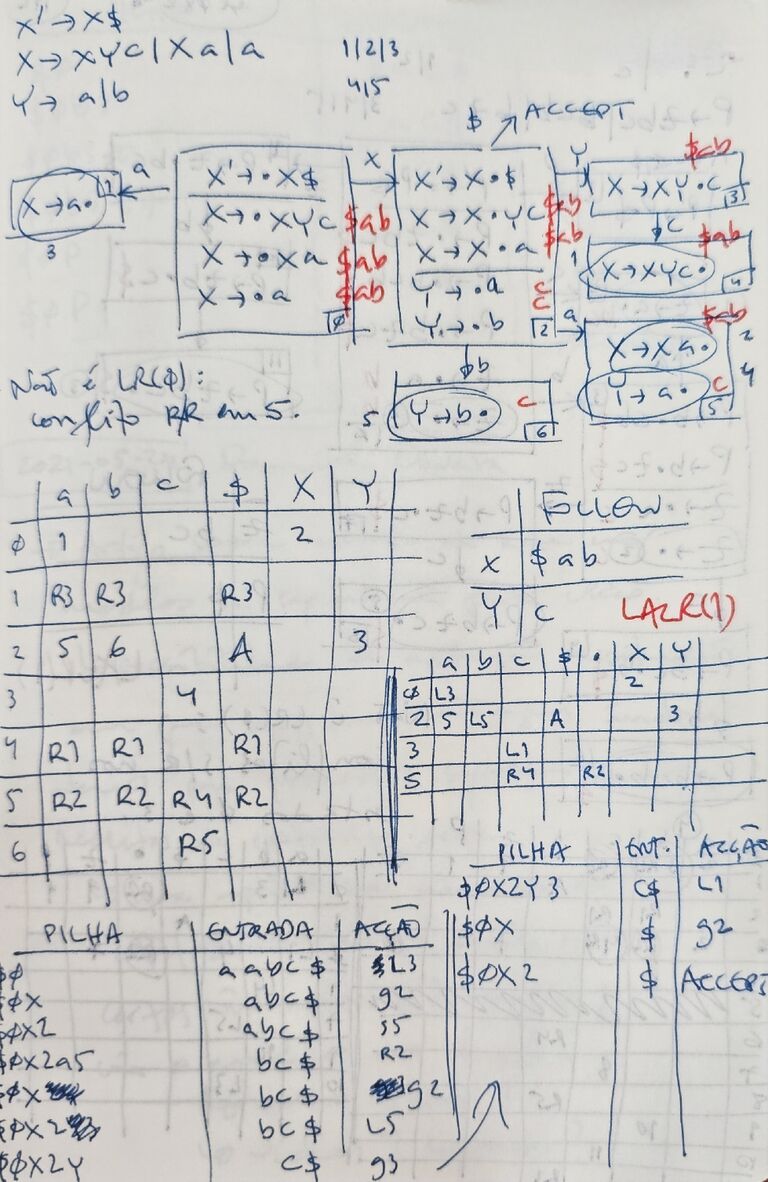Difference between revisions of "Bottom-Up Parsing/Exercise 17: LALR(1)"
From Wiki**3
< Bottom-Up Parsing
(→Solução) |
(→Solução) |
||
| (2 intermediate revisions by the same user not shown) | |||
| Line 1: | Line 1: | ||
== Problema == | == Problema == | ||
| − | Consider the following grammar, where ''' | + | Consider the following grammar, where '''X''' is the initial symbol and '''{ a, b, c }''' is the set of terminal symbols: |
<source lang="text"> | <source lang="text"> | ||
| − | X | + | X → X Y c | X a | a |
| − | Y | + | Y → a | b |
</source> | </source> | ||
# Compute the set of LALR(1) states for the grammar. Build the corresponding LALR(1) parse table. | # Compute the set of LALR(1) states for the grammar. Build the corresponding LALR(1) parse table. | ||
| Line 11: | Line 11: | ||
== Solução == | == Solução == | ||
| − | Note-se que a solução apresentada é para SLR(1) e LALR(1) (a vermelho). | + | Note-se que a solução apresentada é para SLR(1) e LALR(1) (a vermelho -- no estado 1, tem-se '''$ab''' como lookahead). |
{{CollapsedCode|Solução completa| | {{CollapsedCode|Solução completa| | ||
Latest revision as of 15:04, 8 May 2024
Problema
Consider the following grammar, where X is the initial symbol and { a, b, c } is the set of terminal symbols:
X → X Y c | X a | a
Y → a | b
- Compute the set of LALR(1) states for the grammar. Build the corresponding LALR(1) parse table.
- Compact the parse table, eliminating and propagating reductions.
- Show the parsing process for input aabc (including the actions/gotos and the input and stack states). In case of conflict, assume YACC's behavior.
Solução
Note-se que a solução apresentada é para SLR(1) e LALR(1) (a vermelho -- no estado 1, tem-se $ab como lookahead).
| Solução completa |
|---|
